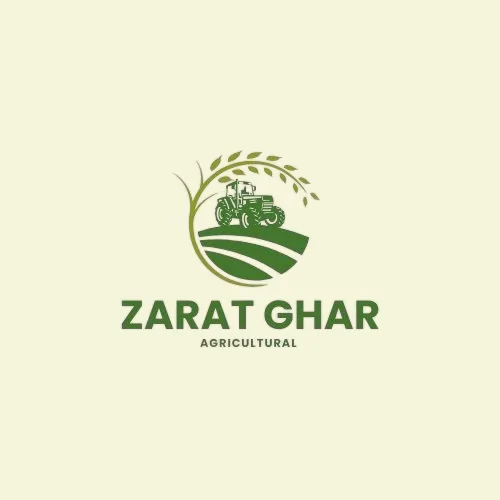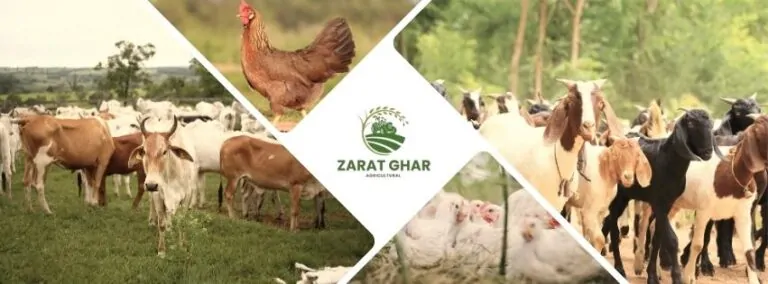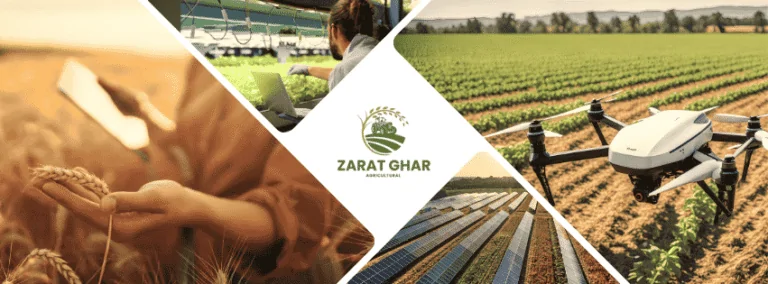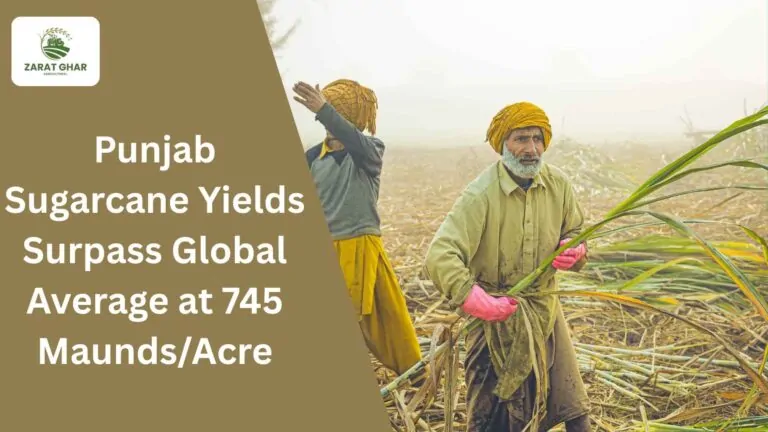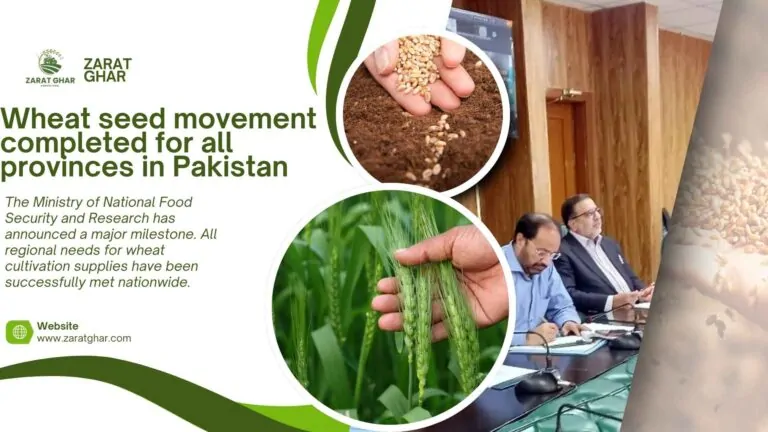Pakistan Budget 2025-26 Impact On Agriculture
The agricultural industry in Pakistan is a cornerstone of the economy in terms of employment, GDP, as well as food security. With the Pakistan Budget approaching for the year 2025-26, it is important to analyze the anticipated socioeconomic proposals in relation to the agriculture sector and sustainable development. This article assesses the Pakistan Budget 2025-26 with an agriculture focus, looking at its main pillars and their implications on the country’s farming future.
The Government’s Attention on Agricultural Development
Pakistan’s economy relies heavily on agriculture, which employs about 40% of the workforce and constitutes nearly 24% of the GDP. The upcoming budget will have priority on the agricultural sector, especially regarding the modernization of farming methods, crop yield improvements, and sustainability. For the long-term agricultural growth in Pakistan, it is essential that the budget makes provisions in technology, research, and development on new farming practices.
Subsidies and Financial Aid to Farmers
Farm input costs, particularly seeds, fertilizers, and pesticides, have been a concerning issue for farmers in Pakistan. Proposed Budget 2025-26 anticipates including subsidies that will alleviate this burden. These subsidies will ensure farmers obtain fundamental agricultural inputs at reduced prices. Additionally, the government is expected to introduce policies focusing on financial aid to invest in advanced farming technologies, modern agricultural machinery, and upgraded irrigation systems. Gaining these capabilities will assist farmers in improving productivity and competitiveness at the global level.
Initiatives in Irrigation and Water Resources Management
With a considerable portion of the country’s cultivated land using primitive irrigation techniques, Pakistan’s water resources pose an enormous challenge. The county’s agricultural productivity in the long term will depend on modernization of the irrigation and water management facilities, which is expected to be included in the 2025-26 budget. Key projects may include the construction of new reservoirs, upgrading irrigation canals, and promoting water use efficiency. These projects are essential in aiding farmers combat the increasing water scarcity.
Support for Small-Scale and Subsistence Farmers
Pakistan’s agriculture includes a critical mass of small-scale and subsistence farmers who encounter great difficulty in accessing credit and market opportunities. With the 2025-26 budget, the government is expected to strengthen support for these farmers. It is likely that provisions will include low interest loans, better access to markets, and training and education programs. Small holders are likely to benefit from the government that is intended for aid in moving away from subsistence frameworks, therefore embracing more productive farming.
Advocacy for Sustainable Agricultural Practices
Concerns over climate change have begun to highlight the importance of sustainable agricultural practices. Pakistan’s agriculture industry is particularly at risk due to climate change impacts such as shifting weather patterns, recurrent droughts, and flooding. It is anticipated that Budget 2025-26 will incentivize the adoption of climate-resilient farming practices. Other forms of farming, including organic farming, agroforestry, and conservation agriculture, may also receive grants, technical support, and research financing to bolster soil health and revitalize long-term agricultural productivity.
Agricultural Policies Aimed at Export Promotion
Pakistan’s agricultural sector is primarily geared towards meeting the domestic demand, with very little focus on exports. To strengthen the country’s economy, the government is expected to implement policies designed to increase agricultural exports. These policies might include granting assistance for growing crops with higher export potential, overhauling post-harvest storage and processing facilities, and developing international marketing frameworks. Focusing on exports will allow Pakistan to enhance its foreign exchange earnings and improve farmers’ livelihoods.
Advancements in Agricultural Research and Development
Roughly one out of ten people in the world today faces hunger, while Pakistan’s population grows at roughly two percent every year. This means that addressing agricultural productivity yields challenges along with sustaining natural resources at the same time. This issue underlines the importance of modern research and development. Intensifying modern farming approaches and investing in advanced technology continues to rise, especially in Asia where funds from Pakistan are mostly utilized in institutions for the aim of creating crops that withstand dry spells, improving soil fertility, and social skills. Increased expenditure in R&D will enable Pakistan to be at par, best in class, and make avail its agricultural resources within the right time frame.

Budget Comparison
This is the brief comparison table illustrating notable increases and decreases for the scope of agriculture related subsidies and programs in the Pakistan Budget 2025-26 compared to the last year’s allocations:
| Item | Budget 2024-25 in Millions | Budget 2025-26 in Millions | Change in % |
|---|---|---|---|
| PASSCO Wheat Reserve Stock | 12,000 | 20,000 | +66.7% |
| Wheat Cost Differential Subsidy | 4,000 | 6,000 | +50% |
| Fertilizer Subsidy (Imported Urea) | 10,000 | 15,000 | +50% |
| Mark-up Subsidy on Agricultural Loans (ZTBL) | 1,086 | 0 | -100% (Removed) |
| Farm Mechanization Subsidy & Risk Sharing | ~ (Not specified) | 7,000 | New / Increased |
| Agricultural Research (PSDP Allocation) | 23,928 | 4,254 | -82.2% |
| Solarization Subsidy for Tube Wells (Balochistan) | 1,000 | 0 | -100% (Removed) |
| Tariff Differential Subsidy on Tube Wells | 9,500 | 4,000 | -57.9% |
| Crop Insurance Scheme | (Not specified) | 1,000 | New / Increased |
| Livestock Insurance Scheme | (Not specified) | 700 | New / Increased |
Conclusion
The Agriculture sector in the Pakistan Budget slated for the fiscal year 2025-26 can be transformed if the government emphasizes proper allocational strategies like sustainable farming subsidies, water management, strong support for small farmers, and agricultural exports. The new policies will guarantee food security and improve the economic status of well over two hundred million Pakistanis whose primary source of income is agriculture. Pakistan’s agricultural sector stands to gain and become more resilient if sustained investment and proper focus are placed on overcoming existing hurdles.
